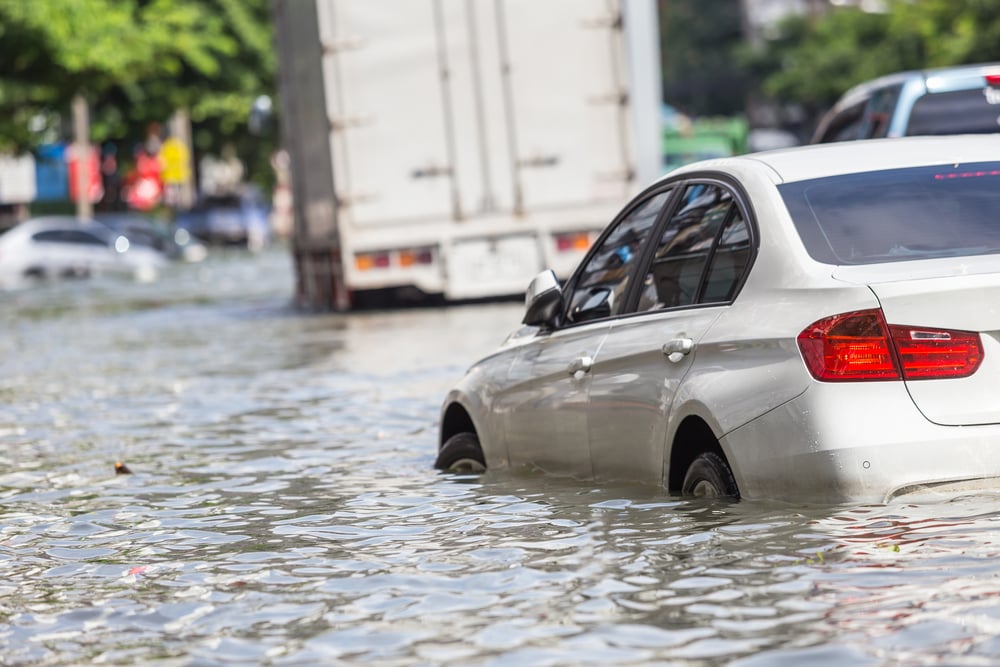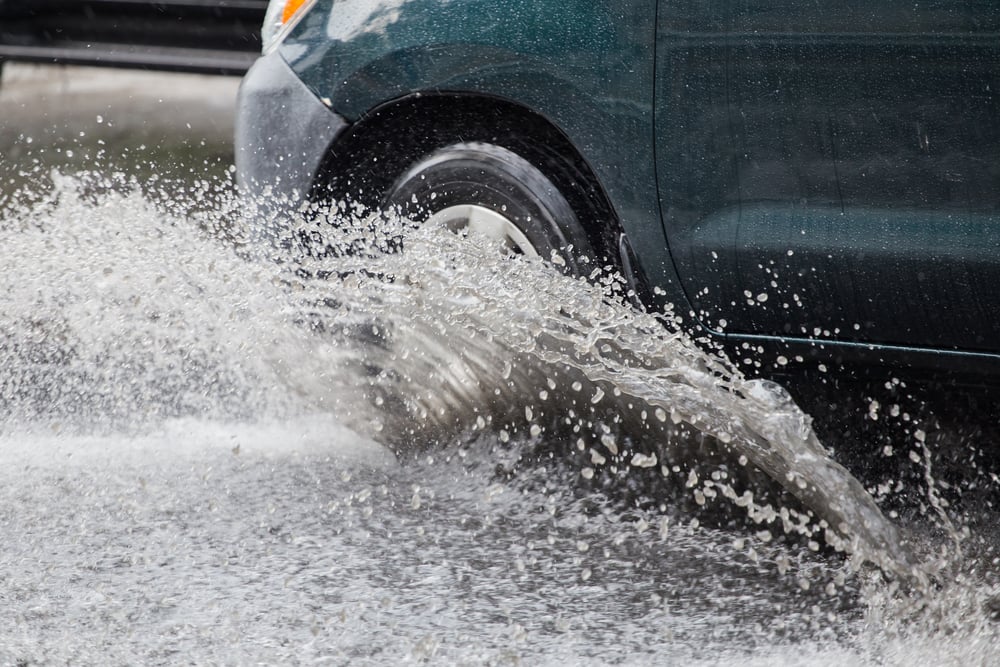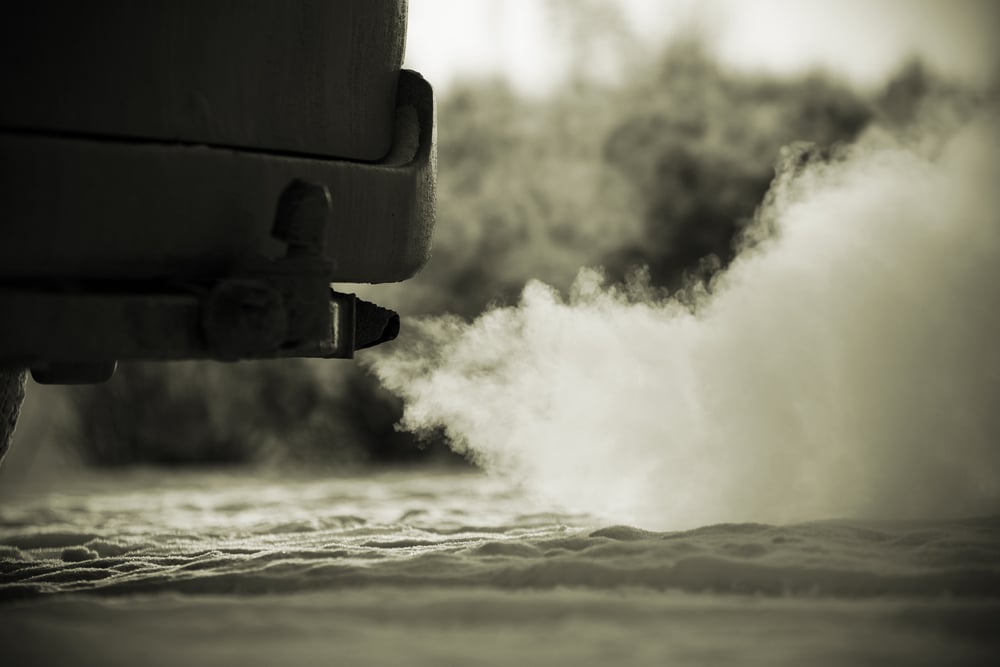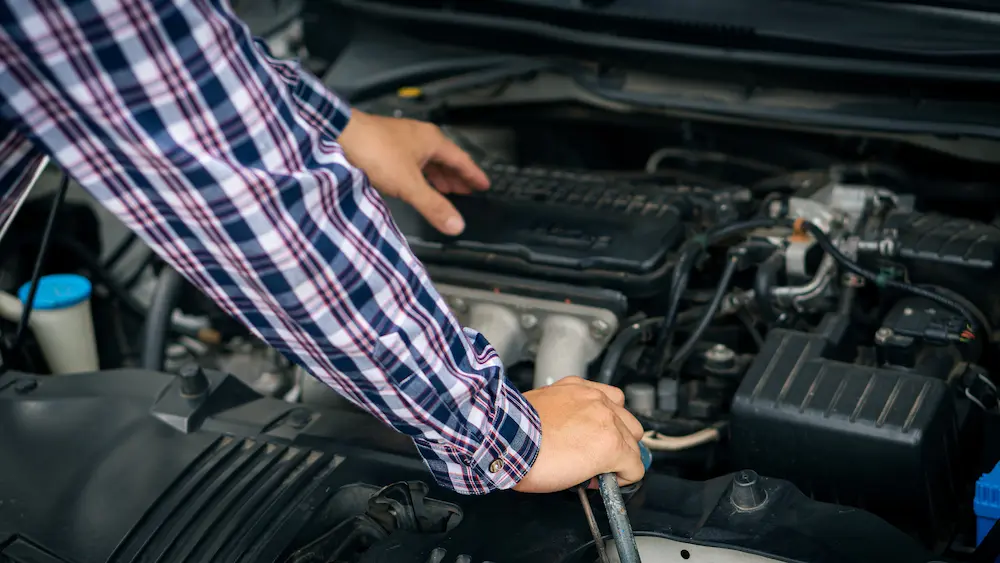The Monsoon season is here to stay for a while and with that, daily showers and heavy thunderstorms come together as well. In the recent news, we’ve seen really bad cases of flood due to the non-stop heavy downpour on the East Coast of Malaysia, mainly in Kelantan, Terengganu, and Pahang.
So, what do you do if you have to drive through these flooded roads? Also what happens if your car is caught in the flood? Continue reading to find out everything you need to know when it comes to cars and flood.
Read more: Dangers of Buying a Flood Affected Car

How to Drive Through Flooded Roads (If Necessary)
If you are ever caught in a flooded road, the first thing to do is check your map to see if there are any other routes you can take to reach your destination without passing through the flood. If not, here are some driving tips in such times of duress.
Always Keep your Car in a Running and Moving – One thing you should never do is bring your car to a total stop during a flood. You should always keep your car moving slowly but at a constant, steady speed without accelerating too much as that might cause water to seep into the vital parts of the car like through the exhaust.
This can be really dangerous as it can cause damage to your engine. Remember to always drive in a lower gear, as anything beyond second gear can cause the car to stall.
Keep Revving the Engine – If you think the level of flood is low enough to pass through, drive your car on first gear and continuously rev the engine while you drive. This revving will stop the water from entering the engine and prevent stalling or seizing of the engine.
Do Not Restart Your Car if it Stops – If your car is stalled in water, make sure you do not restart your engine immediately. If you restart your car immediately, you may cause additional stress on the engine’s connecting rods which might lead to them breaking apart. Restarting your engine can also cause water to leak into the electrics, which may cause a fire.
Switch on Your Lights and Turn Off the Air Conditioning – Your headlights will not only help you see the road better, but it also alerts other cars around you of your presence. The lights might also help you guess how deep the water-logged roads are.
After your lights are on, make sure to turn off the air conditioning system as the rising water level could quite easily damage the fan that sits in the engine compartment.
Do Not Panic – If you panic, you cannot think straight on what to do next which can be really dangerous, and this might cause an accident. Always remain calm and try your best to exit your car in a safe manner.
The pressure of the water outside might prevent your doors from opening, so if this happens, try using force by pushing the door with both your legs. If that does not work, you can use your headrest or something else to break one of the door’s window to escape safely.
Read more: How To Spot a Flooded Car for Sale Before It’s Too Late!
What to do if Your Car is Submerged in Flood Water
Check the Water Level – The first thing you need to do if your car was submerged in the flood water is wait for the water to recede before checking the condition of your car. Flooded water usually leaves traces of mud on the surface of your car, especially the exterior of the car. Checking this is important to assess the possibility of damage whether the flood water has submerged the entire car and has entered the engine and other parts of the car.
Do Not Start Your Engine – If a flood has submerged your entire car including the cabin and engine space, never start your car’s engine because that can cause a short circuit. Major components such as engines and gear systems can be damaged by the flood waters. All you need to do is to remove the battery of your car and call a mechanic or tow it to your service center.
Check the Engine/Gearbox – Once your car is at the workshop, do check the engine and the gearbox. Check the dipstick of your car. If it exceeds the actual amount, this means your engine has been flooded. Your engine oil and gear oil might have been mixed with water, so it’s safer to remove them and replace them with new ones. You should flush it 3-5 times depending on your mechanic’s advice, as water that is mixed with engine oil / gearbox fluid can affect the performance of your car.
Flush the Petrol (If Needed) – If the petrol tank is positioned on the lower side of your car, it increases the probability of flood water entering the tank. You then should remove the petrol that has been mixed with water to avoid more serious damage to your engine. Do check with your mechanic on how this process should be done.
Remove and Dry Components of Your Car – Any removable components in the car such as the radio should be removed and dried properly. Wash your car with a heavy jet especially the engine and brake parts. However, never spray water towards the air filter holes and lubricating oil lids. In addition, clean the dirt on the interior part of your car like the cushions to avoid any kind of nasty odor. You can use the help of a professional cushion cleaner to get this job done effectively.
We hope this article will be able to help you if you ever get stuck in a flooded road. Do remember it’s always safer to leave your car if the flood starts to get worse as your life is much more important to us. If there is a need to drive in the rain, you can check out our driving safety tips here.
Now, if you want to sell your old car and buy a used car, visit carsome.my or download our mobile app to browse through our wide selection of quality used cars that has passed a stringent 175-point inspection as well as professionally refurbished to ensure complete comfort, safety beyond standards, and a refurbished aesthetics.
Read more: What Do I Do With A Flooded Car & How Should I Dispose of It?


